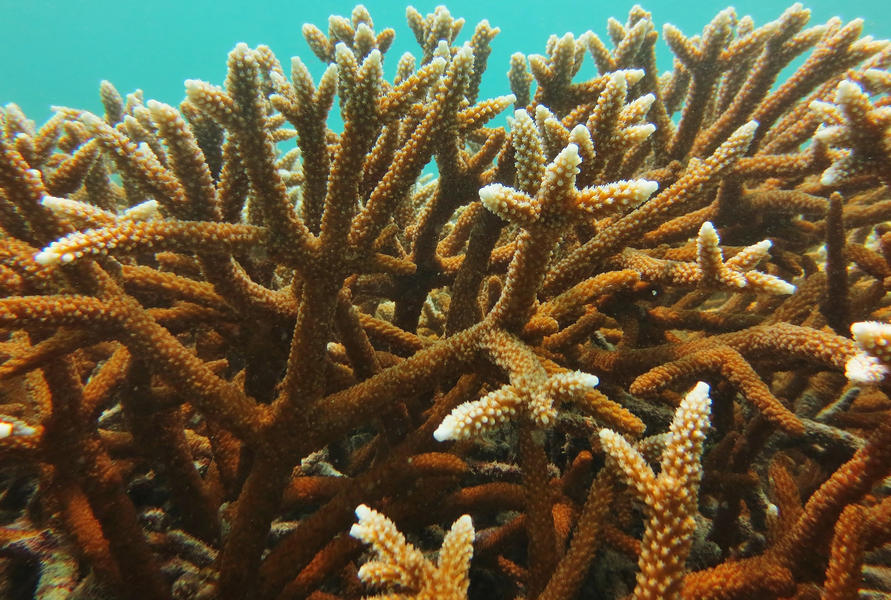Author Name
D. Lirman, C. Lachnit, M. Ladd, S. Ippolito, J. Patterson
Restoration partners from The University of Miami, NOAA Southeast Fisheries Science Center, and The University of Florida collaborated to address several of Florida’s reef restoration research needs and bottlenecks: 1) improving outplanting success, 2) expanding the use, husbandry, and availability of sea urchins for coral-herbivore tandem restoration, 3) and reducing fish and invertebrate predation pressure on outplanted corals.
As the need for herbivore-coral tandem restoration grows, novel methods are needed to expand the capacity to grow urchins both in situ and ex situ. Underwater rearing pens designed in this project to expand D. antillarum in-situ rearing were constructed and deployed. These pens represent a relatively inexpensive, modular design that can be replicated by restoration practitioners throughout Florida to scale up production of urchins and support herbivore restocking efforts. In an effort to increase our knowledge on the use of urchins as a mechanism to enhance outplant survival when in competition with algae, we conducted a grazing assay with the sea urchin Tripneustes ventricosus grown in the lab to evaluate its potential for deployment as part of coral�urchin tandem restoration. While challenging to spawn, T. ventricosus proved to be an effective ex-situ grazer at all density treatments tested, providing another local urchin that may be used for tandem restoration in the future.
Predation by fish on newly outplanted corals has been shown to be a major bottleneck to coral restoration efforts, particularly for massive coral species. Here, we tested the use of fish grazing blocks as a potential method to reduce predation. Grazing blocks made out of a calcium carbonate base mixed with various ingredients (e.g., algae wafers and pellets), were tested as potential fish predation deterrence (focusing the predation by fish predators away from outplanted corals). Tank-based testing revealed that grazing blocks were not able to withstand high flow environments. Moreover, no differences in predation on outplanted corals were seen between the controls and the corals protected by the grazing blocks, indicating that the grazing blocks were not an effective method to mitigate fish predation.
Outplanted corals need to be attached to different substrates on reefs, and attachment efficiency has been identified as a potential restoration bottleneck. Here, we tested different attachment methods and materials to evaluate their performance. Coral attachment success varied by attachment material (cement, epoxy, Seatak) and attachment (reef substrate vs coral skeleton). There was better attachment on the reef substrate compared to coral skeleton across all attachment materials. Cement and Epoxy had higher attachment success compared to Seatak, which is not recommended here as an effective outplant material. Attachment success was highest for corals outplanted on cement bases. Survivorship, largely driven by fish predation, was significantly influenced by species and genotype but not attachment method.
Acropora cervicornis plots with coral colonies of different sizes were outplanted to document predation by fireworms and snails and evaluate predation mitigation methods. Within the Acropora plots, the impacts of Hermodice carunculata (fireworm) and Coralliophila 3 Agreement Number C3EF30 June 2025 abbreviata (snails) predation increased over time and were higher on larger coral colonies, with fireworm predation having the biggest impacts. Predator removal was an effective way of reducing the abundance and impacts of fireworm and snails.


